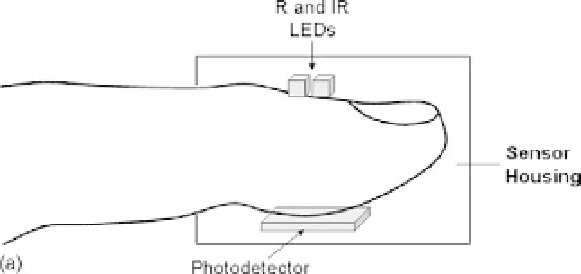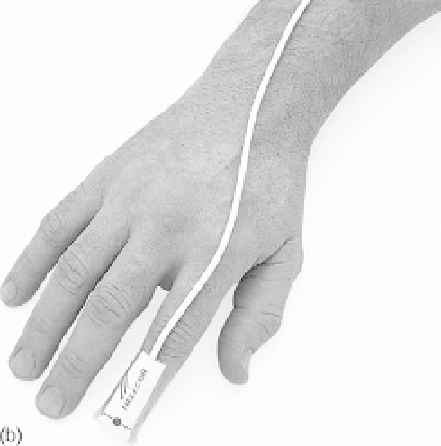Biomedical Engineering Reference
In-Depth Information
T represents the light transmission through the sample and is given by P
t
/P
0
, and SO
2
is
defined as c
HB
/(c
HB
þ
c
HBO
2
).
The measurement of SO
2
in blood can be performed either in vitro or in vivo. In vitro
measurement using a bench top oximeter requires a sample of blood, usually withdrawn
from a peripheral artery. The sample is transferred into an optical cuvette (a parallel-wall
glass container that holds the sample), where it is first hemolyzed and then illuminated
sequentially by light from an intense white source after proper wavelength selection using
narrow-band optical filters.
SO
2
can also be measured in vivo using a noninvasive pulse oximeter. Noninvasive opti-
cal sensors for measuring S
a
O
2
by a pulse oximeter consist of a pair of small and inexpen-
sive light-emitting diodes (LEDs)—typically a red (R) LED around 660 nm and an infrared
(IR) LED around 940-960 nm—and a single, highly sensitive silicon photodetector. These
components are typically mounted inside a reusable spring-loaded clip or a disposable
adhesive wrap (Figure 10.30). Electronic circuits inside the pulse oximeter generate digital
switching signals to turn on and off the two LEDs in a sequential manner and synchronously
FIGURE 10.30
(a) Transmission-type pulse oximeter finger probe, and (b) disposable finger sensor.
Courtesy of
Nellcor Puritan Bennett, Inc., Pleasanton, CA.



